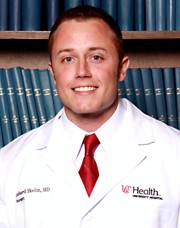 MedicalResearch.com Interview with:
Richard S. Hoehn, MD
MedicalResearch.com Interview with:
Richard S. Hoehn, MD
Division of Transplant Surgery
Department of Surgery
University of Cincinnati School of Medicine
Cincinnati, OH
Medical Research: What is the background for this study? What are the main findings?
Dr. Hoehn: Safety-net hospitals are hospitals that either have a stated purpose of maintaining an “open door policy” to all patients, regardless of their ability to pay, or simply have a significantly high burden of patients with Medicaid or no insurance. As healthcare policy and reimbursement change to focus on both “quality” metrics as well as cost containment, these hospitals may find themselves in a precarious situation. Current literature suggests that increased safety-net burden corresponds to inferior surgical outcomes. If this is true, safety-net hospitals will have inferior outcomes and suffer more financial penalties than other centers. This decrease in resources may adversely affect patient care, leading to even worse outcomes and further financial penalties, potentially creating a downward spiral that exacerbates disparities in surgical care that already exist in our country.
Medical Research: What are the main findings?
Dr. Hoehn: Our study analyzed 9 major surgical operations using the University HealthSystem Consortium clinical database, which represents 95% of academic medical centers in the United States. We sought to determine the effect of patient and hospital characteristics on the inferior outcomes at safety-net hospitals. As expected, we found that safety-net hospitals had higher rates of patients who were of black race, of lowest socioeconomic status, had government insurance, had extreme severity of illness, and needed emergent operations. They also had the highest rates of post-operative mortality, 30-day readmissions, and highest costs associated with care.
Next we performed a multivariate analysis controlling for patient age, race, socioeconomic status, and severity of illness, as well as hospital procedure-specific volume. Using this model, we found that the increased mortality and readmission rates at safety-net hospitals were somewhat reduced, but the increased costs were not affected. Safety-net hospitals still provided surgical care that was 23-35% more expensive, despite controlling for patient characteristics. This suggests that intrinsic hospital characteristics may be responsible for the increased costs at safety-net hospitals.
To further investigate this finding, we analyzed Medicare Hospital Compare data and found that
safety-net hospitals performed worse on Surgical Care Improvement Project (SCIP) measures, had higher rates of reported surgical complications, and also had much slower measures of emergency department throughput (time from arrival to evaluation, treatment, admission, etc). This corresponded with our finding that hospital characteristics may be driving increased costs at safety-net hospitals.
(more…)














